Which are the best air rifles for shooting rabbits?
Air rifles: I was rabbiting recently with a .177 air rifle, but I couldn’t hit anything. Is this calibre powerful…
Win CENS ProFlex DX5 earplugs worth £1,149 – enter here
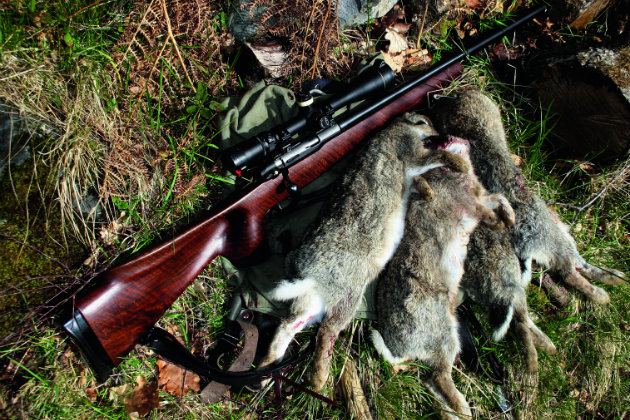
Go out into the field shooting rabbits and you will improve your hunting and shooting skills, learning about how animals avoid humans and predators.
The rabbit ranks as some of the best sport a shooter can have. It’s all about being in the fields, watching and listening. It’s not about head count although you will bring home some delicious rabbit meat.
Although it is perceived as less glamorous, shooting rabbits is physically and mentally testing. Rabbits bolt from any angle at any given time, run along the ground, up and down ditches, away and towards you and partly when they are hidden in the undergrowth.
Start by taking a look at the weather forecast, because this will influence rabbit behaviour. If the night before has been warm and breezy with a bright moon then the rabbits will have been out in it, eating. By daylight they will be back in the burrows for the rest of the day, so you won’t see them.
Go out early just as the sun comes over the fields and you will usually see rabbits feeding warily above ground.
Rabbit activity increases in hot weather. I usually go out in the early morning shooting rabbits before it gets too hot. The rabbits don’t expect a human presence then and they are out looking for the sun.
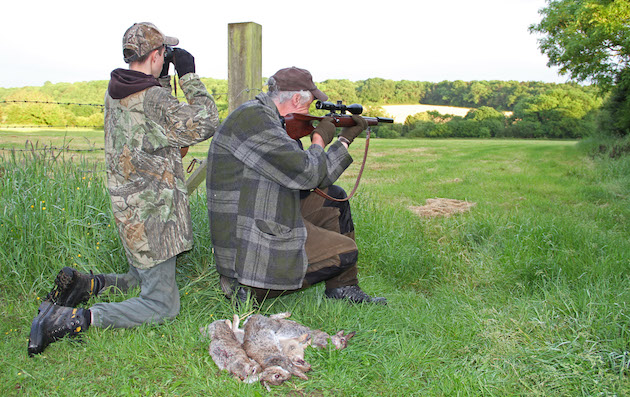
Rabbiting is all about being out in the fields, watching and listening
In the evening you can sit still and wait for the rabbits to come out. Whether at dawn or dusk, if the sunlight is bright and strong, rabbits will often feed farther back in the cover where it is warm, in which case they will see you before you catch sight of them.
On long light evenings you will generally need to wait for the rabbits to appear rather than stalking them as you might in the morning. That said, undisturbed rabbits will often be out. Try to approach them with the setting sunlight behind you to blind them and not you, wind permitting.
Hiding next to a burrow lit by the last light on a summer’s day can be very rewarding, and if you aren’t successful you can always lamp later.
The very best time is to go out shooting rabbits after a night-time rainstorm. The rabbits will have stayed in their burrows and will be keen to feed come the morning. If they are hungry they will be slower to bolt back into their burrows so you should get two or three shot opportunities. Don’t be too keen not to reload and follow a group of running rabbits. In situations where rabbits have fed overnight and are full up, if you disturb or shoot one it can often be a long wait for a re-emergence.
Early mornings before the sun becomes too hot is Bruce’s favourite time to hunt rabbits in summer
Look at the wind direction because it’s something a rabbit is very sensitive to. If the wind blows a rabbit’s scent into a hedgeline they can be very nervous as a fox can smell them and sneak up on them. Rabbits are more relaxed with the wind blowing from the hedges out towards them as they feed. This is because their scent is being blown across the field, where they can keep a look out. Plus, if you are sneaking along the hedge, your scent will reach them first. Scent, as with wind, means you should always stalk with your back to a bush, scrub, tree or hedgeline. Ensure that you are never a silhouette against the skyline; crouch if necessary.
Let the wind work for you: if there is no cover available get them down the burrows with your scent and then get into position, downwind this time, and wait for them to re-emerge.
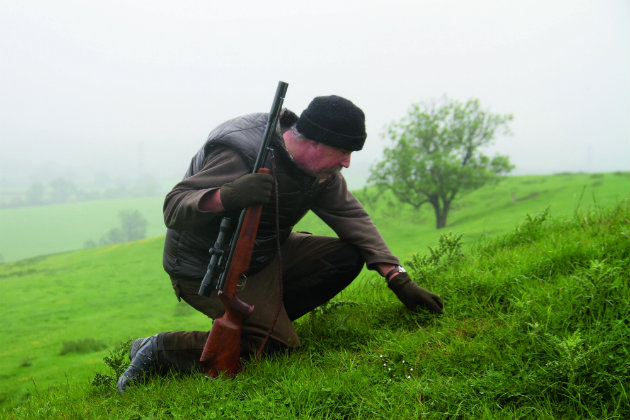
Summer mornings can be wet so get there early to check for signs such as droppings
You will need a good-quality pellet or bullet pouch to stop your cartridges getting wet
Should you wear camouflage? It’s popular but I wear a natural colour wool check top that blends into the surroundings. Don’t wear anything that rustles, your clothes need to be silent. Personally I cannot shoot without gloves.
Silhouettes, rangefinding, setting out wind tape, and whether to stalk or hide are all valid considerations before you set out on any rabbit shoot. I like rabbit shooting on the hoof as you travel light, unlike hide shooting with poles, hides and decoys. It feels more natural to me.
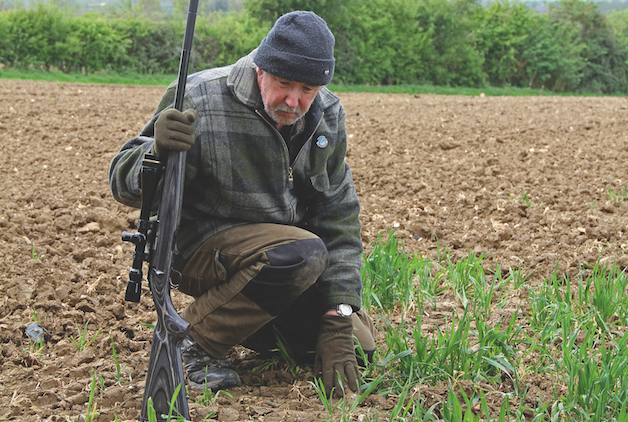
Male rabbits, or bucks, in particular will chin anything they consider theirs, often logs or stones
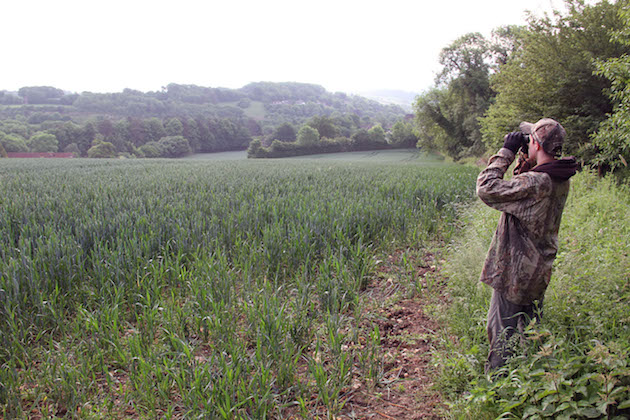
Good planning and observation is important to rabbiting
Rabbits are vegan and eat grasses, bulbs, bark, roots and herbs. Their food supply causes them to live on the fringes of cultivated areas or woodland margins in several large family groups. The mating season is usually between February and July, but with climate change a full seasonal breeding regime is commonplace.
Gestation is 28-31 days with between four to six litters a year of four to six young, which allows a rapid and successful regeneration of rabbit numbers despite heavy hunting pressure. Suckled within four weeks, they are then independent and the cycle begins again.
Due to their clear hierarchy, rabbits commonly scent-mark their territory using a gland located under their chin (called “chinning”). Male rabbits, or bucks, in particular will chin anything they consider theirs, often logs or stones. Learn to look for these and a clear rabbit-living regime will emerge, making your shooting a lot easier.
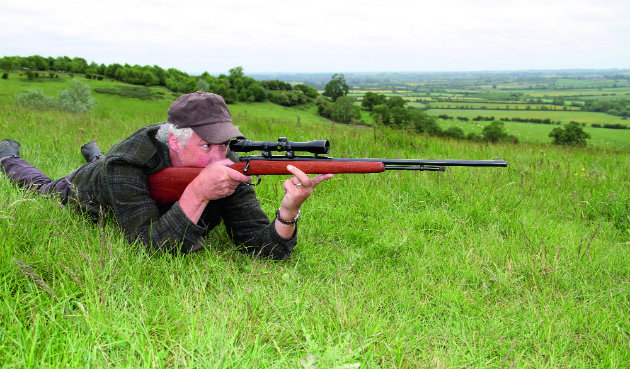
Shooting with a Remington M582 and period scope requires more stealth because you have to get closer to your quarry
Airgunning is a popular way of going after rabbits and today there is so much kit available for the rabbit hunter. Modern rifles, scopes, laser rangefinders, night vision and now thermal imagers
However I sometimes enjoy going the opposite way — down the old classic gun route. There is something pleasing about going hunting with a basic rifle, an old classic or an air rifle because it forces you to reduce the range and use those fieldcraft skills that can get sidelined in the progress of technology. That’s why on a recent outing I was carrying an old Remington M582 rifle and period scope with old ammunition — and not my new Sako custom rimfire.
The great thing about going classic is that the sky is your limit. Often really good, solid, accurate older models are overlooked on the gunsmiths’ shelves in favour of the latest trend. If you buy from a gunsmith you will get a good start, because the rifle will be guaranteed safe to use.
You do not have to go down the usual bolt action route either. I love the challenge of shooting old semi-automatics and pump action rimfires with open sights. You can pick up a good “old” rimfire for as little as £50 and you could still have a “normal” modern rimfire on your firearms certificate for frequent use.
Air rifles: I was rabbiting recently with a .177 air rifle, but I couldn’t hit anything. Is this calibre powerful…
Lamping rabbits: The rabbits around here are definitely getting lamp shy and bolt as soon as I switch on. Have…
Bolt actions may be best to start with, such as BSA Sportsman 5, Remington M series or 541, Savage Model 64, Mauser .410 or Walther KKJ, which are all good candidates. Prices range from £50 to £150. Each can be fitted with a scope if you would like to do that.
I like using a period scope, which can be sourced at auction or online. Period Tascos or Nikko Stirlings are cheap. For that authenticity, why not try an old-style reticule too? On some older-model rifles, scopes such as the J. W. Fecker, Unertl or Redfield 3200 add that air of classic shooting and will test your shooting skills.
You could also try a pump- or lever- action rifle. I love the Browning/Miroku BL-22 lever action. It is superbly made and has a short stroke action with a large- capacity magazine and, even with open sights, is superbly accurate.
As for pump-action models, I like the Remington Fieldmaster with ribbed fore-end. My favourite is a Win Model 61, which uses a tubular magazine under the barrel. It takes a bit longer to load the rounds, unlike detachable modern magazines, but there is a big advantage. Being an in-line tubular feed magazine you can shoot all the lengths of .22 rimfire ammunition from .22 short, long or long rifle. In the Win Model 61 this means you have 22 shorts, 15 longs and 11 long rifle rounds at your disposal. You can load .22 shorts for close-range feral pigeon or rats and the 11.22 long rifle for longer- range rabbits.
The Browning SA is another gem, though this one is a semi-automatic. Prices start at less than £100 for a used one, but £150 to £200 buys a reliable rifle. Older Browning models made in Belgium are sought after as they were made by Miroku in Japan. Both shoot well but the Brownings from Belgium feel more authentic to me.
I also like the Remington Nylon rifle. It is horribly plastic, but it makes a very practical and cheap classic gun because it doesn’t matter if it gets scratched.
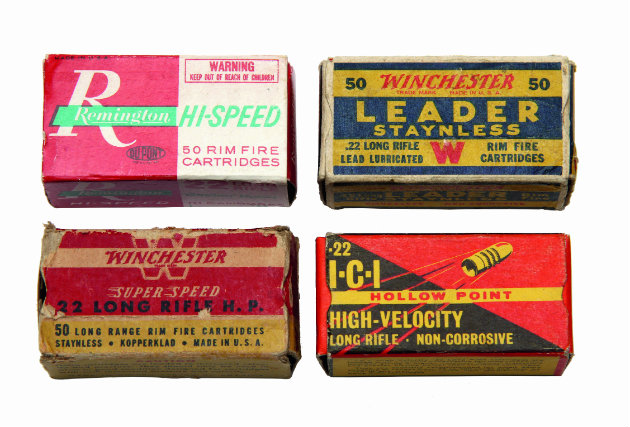
The Winchester Leader Staynless round-nosed bullets at 1,187fps gave decent accuracy at 1.5in. Winchester Super Speed hollow-point bullets at 1,238fps gave 1in five-shot groups at 30 yards Credit: B. Potts
You can use modern ammunition, but I like to go the old ammo route to keep the old-time feel when shooting. But old ammunition, especially rimfire, can lead to misfires. Obtaining old ammo is tricky anyway, but I always chronograph each load to check for correct velocity and small standard deviation to ensure consistent results. I like the old packaging, too, and those 50-round card boxes are tactile.
For my rabbit shooting outing I had a choice of four loads, which showed marked differences in velocity and accuracy. I tested them using my Remington M582 rifle. Accuracy is everything, so I chose the Remington Hi-Speed — despite being a round-nose and not hollow-point — but accuracy was so good and I head shoot anyway.
I sighted the Rem in using an old Nikko Stirling 4x32mm scope that had a German post reticule, which adds to the fun. Light gathering and lens quality may not be comparable with a newer model but 30 to 50 yards is fine for me.
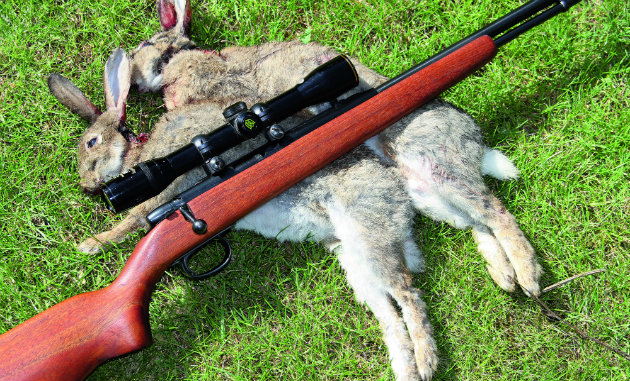
An old scope such as this Nikko Stirling 4.32mm with German post reticule adds to the experience
I practised at 10 yards, 30 yards and 50 yards to check the trajectory, so that I was zeroed at 30 yards, but if a rabbit popped out at 10 yards or at 50 yards I knew the hold-over point I needed. This is doubly important on an old classic with no extra stadia in the reticule to help you.
The morning started well with a nice-sized rabbit sunning itself on a small ridge on the edge of a dramatic bowl in the Buckinghamshire countryside. A short stalk through the gorse and a shot off the sticks had the first one in the bag.
A second followed after 20 minutes. I wasn’t using a sound moderator, so a shot will put the rabbits down their burrows for a while. This one had me crawling through the grass until I reached 30 yards or so, then it noticed me cocking the Remington and got up on its hindlegs to get a better look. That gave me a clearer target and that was that.
As a second rifle, a classic rimfire can provide a lot of satisfaction and skill to your normal shooting rabbits regime and it won’t break the bank. Choose wisely and have the rifle properly checked by a gunsmith for reliable function. I guarantee it will put a big smile on your face shooting rabbits with classic rimfire and open sights — it’s like starting your shooting career all over again without the expense.
Get the latest news delivered direct to your door
Discover the ultimate companion for field sports enthusiasts with Shooting Times & Country Magazine, the UK’s leading weekly publication that has been at the forefront of shooting culture since 1882. Subscribers gain access to expert tips, comprehensive gear reviews, seasonal advice and a vibrant community of like-minded shooters.
Save on shop price when you subscribe with weekly issues featuring in-depth articles on gundog training, exclusive member offers and access to the digital back issue library. A Shooting Times & Country subscription is more than a magazine, don’t just read about the countryside; immerse yourself in its most authoritative and engaging publication.

